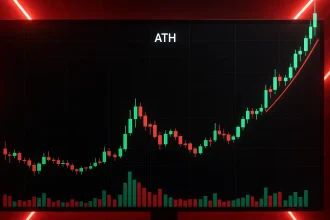The cryptocurrency sector is experiencing a transformative period as governments worldwide implement new regulations to address the rapid evolution of digital assets. These regulatory changes aim to balance innovation with consumer protection, financial stability, and compliance with international standards.
United States: The GENIUS Act and Its Implications
In July 2025, the United States enacted the Guiding and Establishing National Innovation for U.S. Stablecoins Act (GENIUS Act), establishing a comprehensive framework for stablecoin issuance. The Act mandates that stablecoins be backed one-to-one by U.S. dollars or other low-risk assets, ensuring transparency and stability. This legislation is expected to increase demand for U.S. Treasuries, as stablecoin issuers seek compliant reserve assets. The GENIUS Act also introduces dual federal and state supervision, enhancing consumer protection and aligning the U.S. with global regulatory trends.
China’s Strategic Embrace of Yuan-Backed Stablecoins
China is reportedly considering the introduction of yuan-backed stablecoins to promote the internationalization of its currency. This marks a significant policy shift from its 2021 ban on cryptocurrency trading and mining. The Chinese State Council is expected to review a roadmap outlining targets for yuan internationalization, regulatory roles, and risk management. Major cities like Hong Kong and Shanghai are anticipated to lead domestic implementation, reflecting China’s strategic use of financial innovation to counter the dominance of U.S. dollar-backed stablecoins in global markets.
European Union’s MiCA Regulation and Market Integration
The European Union’s Markets in Crypto-Assets Regulation (MiCA), fully applicable since December 2024, aims to streamline the adoption of blockchain and distributed ledger technology while protecting users and investors. MiCA provides a harmonized regulatory framework across EU member states, facilitating market integration and reducing regulatory arbitrage. However, concerns remain about potential loopholes, such as the regulation’s treatment of global firms issuing the same stablecoin from both EU-regulated and third-country entities, which could expose the EU to risks in the event of large-scale redemptions.
South Korea’s Regulatory Overhaul and Crypto Lending Suspension
On August 19, 2025, South Korea’s Financial Services Commission (FSC) ordered local crypto exchanges to suspend all lending services immediately, citing significant investor risks and the absence of a formal regulatory framework. This move follows a surge in lending activity, with 27,600 users borrowing $1.1 billion in just one month, 13% of whom faced forced liquidation due to market volatility. The FSC pledged to introduce clear guidelines to protect users and stabilize the market, allowing current loans to be repaid or extended under existing terms. This crackdown is part of broader efforts by the South Korean government to regulate and expand digital finance, including plans for spot crypto exchange-traded funds and a stablecoin framework pegged to the Korean won.
Pakistan’s Establishment of the Crypto Council
In March 2025, Pakistan launched the Pakistan Crypto Council (PCC) to regulate blockchain and digital assets. Led by Finance Minister Muhammad Aurangzeb and with Binance co-founder Changpeng Zhao as a strategic adviser, the PCC aims to provide a structured approach to the burgeoning crypto market. The council’s formation reflects Pakistan’s recognition of the potential of digital assets and the need for a regulatory framework to ensure their safe and effective integration into the financial system.
Conclusion
The global regulatory landscape for cryptocurrencies is rapidly evolving, with significant developments in the United States, China, the European Union, South Korea, and Pakistan. These regulatory initiatives reflect a concerted effort to balance innovation with consumer protection and financial stability. As governments continue to refine their approaches, the cryptocurrency industry must adapt to a complex and dynamic regulatory environment, which will shape the future trajectory of digital assets worldwide.






